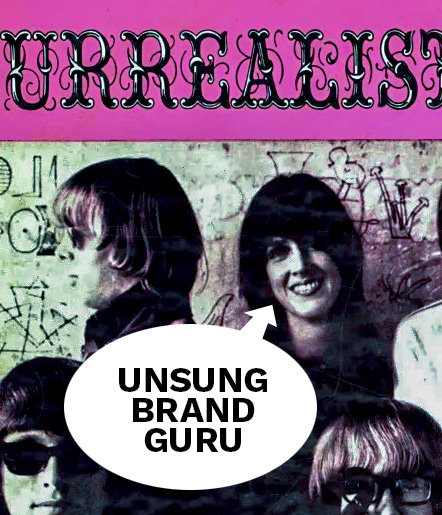Joe KÜHL at 78
Lately, I’ve been thinking about product branding, and how brand loyalties once formed can evolve, or worse, disappear over time. While my professional expertise is in the area of “branding,” this topic is not merely academic for me. I truly love brands and buy the brands I love.
As a young man, two philosophies profoundly influenced my understanding of branding, and its power to influence buying decisions and personal lifestyle. The first of these influences was The Whole Earth Catalog. First published in 1968, TWEC reviewed and recommended what they considered the essential tools for living a righteous counterculture life. The second, and even more profound, influence was the concept of “Positioning,” first introduced in Industrial Marketing magazine that same year, and later popularized by the seminal book, Positioning: The Battle for Your Mind, by Jack Trout and Al Ries. “Positioning” defined how a product compared to its competitors in the marketplace, as well as the mind of the consumer. When competitors offered largely the same kinds of products, positioning offered marketers ever more subtle ways to differentiate themselves from their competition.
The idea of a product that is distinguished by a brand, or mark (later, a trademark), had been around for a couple thousand years. However, the post-WWII economic boom, with its explosion of marketing messages in the form of print and magazine ads, radio spots, billboards, and beginning in the 1950’s, television, showed marketers that corralling their multitude of messages was critical. Around this time, businesses developed the concept of brand management.
However, what really galvanized the world of marketing was the popularity of more emotional advertising that appeared in the 1960’s. These new contemporary, and personal messages had a powerful effect on an emerging bloc of consumers – the post-war baby boomers who were now morphing into adult consumers.
Radiating from the opposite ends of the country – West Coast counter culture versus East Coast / Madison Avenue – these seemingly competitive philosophies actually reinforced each other. The marriage of opposite views helped plant the seed for brands such as Volkswagen, Porsche, Sony, Rolex, and Nikon in many hearts including mine. I drove a VW Beetle, later a Porsche 356B. I owned a Sony component home stereo system, wore a Rolex, and shot my photos with a Nikon. Using these brands made me feel somehow more knowledgeable and skilled. In other words, more hip. Products like these were once called “aspirational” brands. I bought and used these things because they represented a lifestyle that I aspired to.
Time changes everything. Today VW is the second largest carmaker in the world though its cars bare little relationship to the bare bones, spunky Beetles I drove 50 years ago. Porsche morphed from a quirky and affordable pocket rocket into a movie star’s trophy that’s out of reach to all but the one percent. When home stereo components became obsolete, Sony reinvented itself into a media conglomerate. My Rolex watch became an irrelevant, clunky and expensive piece of jewelry once I acquired a smart phone. Only Nikon still makes products that are as useful to me in 2023 as they were in 1965.
Yes, those brands changed…but then so did I. Four-fifths of the way through my seventh decade, I no longer aspire to, or even fantasize that, I have the desire or energy for a “hip” lifestyle. These days, I’m an armchair “shopper” doggedly searching for quality and value, while casting a gimlet eye on what the Federal Trade Commission dubs “puffery.” Some call it “hype.” I’m a fan of the term “bafflegab.” Nonetheless, I’m still not immune to the power of branding. While many once-cherished brands are now dimly remembered flames, today one brand stirs my heart. I’m a passionate devotee of KÜHL clothing.
I stumbled upon the KÜHL brand while slogging through the Internet looking for an alternative to Levi’s jeans. A brand that once symbolized 1960’s culture has become a hodgepodge of trouser styles for ghetto rappers (baggy) and hipster metrosexuals (skinny). While hunting for a utilitarian pant that didn’t bulge with superfluous pockets and zippers, I waded through categories that ranged from “outdoor” or “hiking” to the slightly ominous, “tactical.” Old line brands such as LL Bean, Eddie Bauer and Orvis, which had previously dominated the world of outdoor clothing now seemed a bit fuddy-duddy. Even worse, their pants sagged in all the wrong places with what Levi’s Dockers once charitably termed, “a skosh more room” in the seat and thighs.
After much internet prowling, I stumbled upon KÜHL, the second largest privately-held lifestyle clothing company in the country, headquartered in Salt Lake City. I found that KÜHL’s product lineup offers jackets and pants that fit…me. For better or worse, I still have the snake hips of a teenager. Even better, KÜHL’s garments make me feel stylish, and I actually get compliments on my attire.
According to KÜHL’s website, their clothing designs are “born in the Mountains.” The home page is checkerboarded with photos of slim, attractive, precisely attired Millennials romping in idyllic alpine settings invigorated by the alfresco lifestyle that urbanites sought the minute they moved indoors. Even though the marketing folks at KÜHL tout their clothing as the de rigueur uniform of the outdoor lifestyle, the appeal to someone like me who lives an intentionally indoor lifestyle is still…fit, function, and materials.
Fifty plus years after the concept of a brand’s position relative to its competitors first galvanized the marketing world, the impact of branding is more powerful than ever. Well-conceived and properly-supported brands win hearts, minds and – and most important for the brand – wallets.
Yet, as customers age, their priorities age with them. The brands that were the passions of youth wane, and once ardent devotees of brands drift away. To survive, brands must stay relevant to customers’ original aspirations while being closely attuned to the constant evolution of their customers’ lives.
For now, the KÜHL brand has cracked the code in how to appeal to both young and old alike, at least it has for this geezer.
Brand Wisdom From Grace Slick
Recently, I Googled, “What is a brand.” I do this periodically to see the opinions on branding that are floating around the Internet at any given time. This answer popped up: “A brand is an intangible marketing or business concept that helps people identify a company, product, or individual. People often confuse brands with things like logos, slogans, or other recognizable marks, which are marketing tools that help promote goods and services.”We can thank the smart folks at Investopedia for that pithy definition.
While I don’t disagree with what is a pretty stock answer, I do think it misses the larger point about – and the value of – a true, or authentic, brand. Namely, that limiting branding to a set of visual and verbal characteristics overlooks the deeper reason that some brands are timeless while others fade into obscurity or disappear altogether. What is that deeper reason behind why some brands endure? It’s love, plain and simple.
Brands Are All About Emotion
When asked, psychiatrists will tell you that the strongest emotion is love. Think about it. What’s the dumbest thing you did in the name of love? How about the bravest? Love can leave you embarrassed or proud; sometimes both, at the same time. More to the point, an abiding love can leave you fulfilled in ways nothing else can.
One of my top ten favorite songs of all time is “Somebody to Love” by Jefferson Airplane. Basically, the lyrics offer the remedy for life’s pain: “When the truth is found to be lies, and all the joy within you dies…” At which point, Grace Slick belts out what could well have been the mantra for the late 1960s, “You gotta find somebody to love.” After more than 50 years her message still makes me shiver.
The truth, then and now, is that finding somebody to love easier said than done. Looking for an emotional connection with someone to ease your pain and perhaps bring you some moments of joy is not only difficult, if done in haste, it can lead to some poor life decisions. On the other hand, authentic love gives us a sense of joy, purpose, and self-worth, which leads to self-fulfillment. Of course, this can be addictive but, you’ll likely make it to the other side without too much lasting damage.
A Brand Can Be SomeTHING to Love
Fortunately for those folks who are, shall we say, relationship-challenged, the life-affirming power of love doesn’t have to come from another person. It can come from one’s association with a purpose, or a passion. It can also come from a product, or service, that gives that person’s life a deeper meaning. That being true, when considering the power of a brand to capture loyalty, I suggest that we could adapt Grace’s life coaching to, “You gotta find someTHING to love.” Interacting with a branded product, service, or enterprise – one which helps you accomplish an important purpose, satisfies a deep-seated passion, or fills us with joy – can give one’s life a richer sense of meaning, belonging, and status.
When introducing the concept of branding, I always encourage clients to begin with the brands they prefer, or better yet, the ones they brag to their friends about. These are the sorts of brands that people display on their clothing, in decals on car windows, on bumpers, or even have tattooed on their bodies. These brands are significant to them, and they want you to know it. They include products, companies, military branches, sports teams, musical groups, and religions.
The Strongest Brands Are the Ones That Return Your Love
Relationships can be fickle. Passions can wane. The strongest ones are reciprocal. They listen to you. There is a give and take, and a mutual respect. If a brand you love suddenly changes its original values, or purpose – if it seems to blow with the wind – as a longtime devotee you will feel abandoned, or worse, resentful. Conversely, a brand that consistently commits part of its message and resources to a purpose or mission that is meaningful to you inspires a loyalty which renders competitive pricing nearly irrelevant and is one that diehard fans will go to great lengths to seek out.
Responsive brands, those who authentically embrace a purpose as much as they do their product or profits, survive cultural upheaval, span generations and become generational icons. These brands are the polar opposite of trends and fads. Pick a product category and a brand that stands for something beyond making a superior product. A few examples come to mind: Patagonia, Ben & Jerry’s, and IKEA. By the way, these companies make boatloads of money in addition to doing good.
Brand Loyalty Must Be Honored
As time passes, loyalties can fade and shift. Consider brands like Nike, Coke, and Disney. While they have established category dominance, they no longer inspire as much individual passion as they have previously. For instance, Nike was once synonymous with personal achievement but its category dominance led to the brand becoming all things to all people. Though world-famous, Nike no longer inspires such intense levels of individual aspiration. How about Coke? This brand has become an international behemoth whose products are generally interchangeable with the nearest rival. Yes, these folks make boatloads of cash, but their brands are about products, not passion.
Then there are the brands who – having become legends within their own walls – forgot who brought them to the dance in the first place. Recall the travails of Disney. When they got too in the weeds with cultural trends they left some of their loyal fan base feeling confused and ignored. In other words, as a brand they became unresponsive, and consequently lost both revenue and market value.
So, what’s the lesson here? A successful brand inspires a passion in its customers that must be nurtured and respected. Like any relationship, it requires genuine sensitivity and regular attention to keep its customers loyal and happy.



